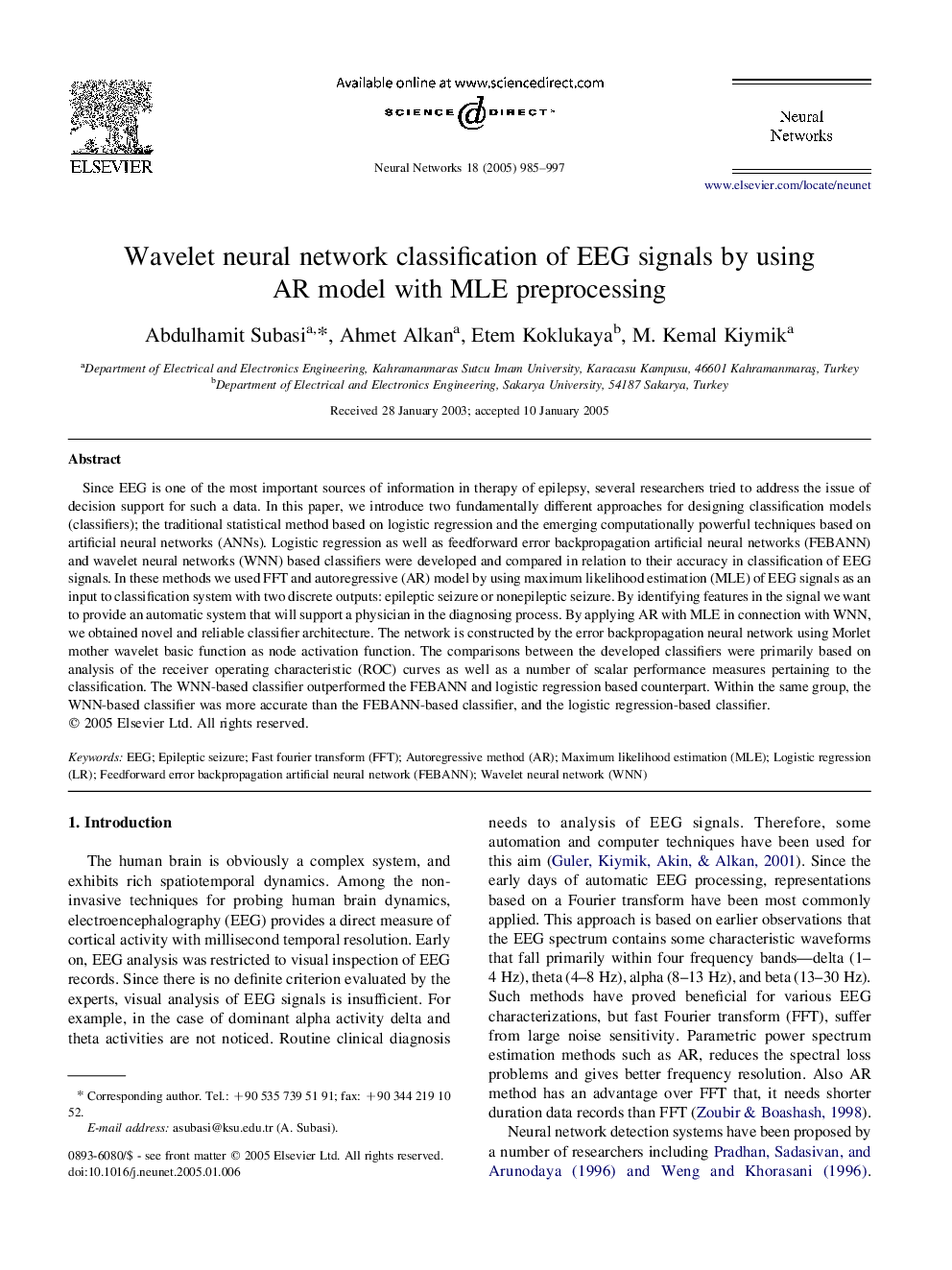| Article ID | Journal | Published Year | Pages | File Type |
|---|---|---|---|---|
| 10325994 | Neural Networks | 2005 | 13 Pages |
Abstract
Since EEG is one of the most important sources of information in therapy of epilepsy, several researchers tried to address the issue of decision support for such a data. In this paper, we introduce two fundamentally different approaches for designing classification models (classifiers); the traditional statistical method based on logistic regression and the emerging computationally powerful techniques based on artificial neural networks (ANNs). Logistic regression as well as feedforward error backpropagation artificial neural networks (FEBANN) and wavelet neural networks (WNN) based classifiers were developed and compared in relation to their accuracy in classification of EEG signals. In these methods we used FFT and autoregressive (AR) model by using maximum likelihood estimation (MLE) of EEG signals as an input to classification system with two discrete outputs: epileptic seizure or nonepileptic seizure. By identifying features in the signal we want to provide an automatic system that will support a physician in the diagnosing process. By applying AR with MLE in connection with WNN, we obtained novel and reliable classifier architecture. The network is constructed by the error backpropagation neural network using Morlet mother wavelet basic function as node activation function. The comparisons between the developed classifiers were primarily based on analysis of the receiver operating characteristic (ROC) curves as well as a number of scalar performance measures pertaining to the classification. The WNN-based classifier outperformed the FEBANN and logistic regression based counterpart. Within the same group, the WNN-based classifier was more accurate than the FEBANN-based classifier, and the logistic regression-based classifier.
Keywords
Related Topics
Physical Sciences and Engineering
Computer Science
Artificial Intelligence
Authors
Abdulhamit Subasi, Ahmet Alkan, Etem Koklukaya, M. Kemal Kiymik,
